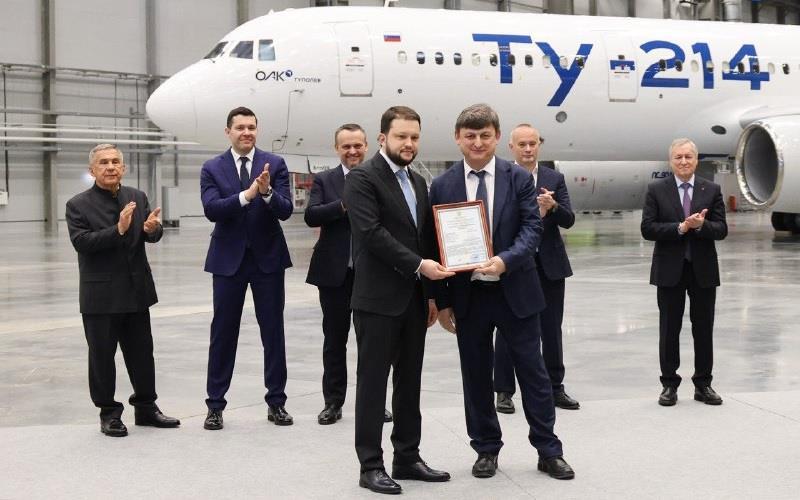Company
Legal Links
Contact
- +44 7947 753363
- contact@skylineairporttransfers.co.uk
- 6 Walsall Street Bilston Wolverhampton WV14 0AT
© Skyline Airport Transfers. Created by![]() Beaphoenix WebDesign ltd
Beaphoenix WebDesign ltd
Popular Locations:
Birmingham: Aston, Bournville, Edgbaston, Erdington, Great Barr, Hall Green, Handsworth, Harborne, Northfield, Quinton, Soho, Sutton Coldfield, Amblecote, Brierley Hill, Coseley, Cradley, Gornal, Halesowen, Kingswinford, Lye, Netherton, Sedgley, Stourbridge, Quarry Bank, Bearwood, Blackheath, Cradley Heath, Great Bridge, Old Hill, Rowley Regis, Smethwick, Tipton, Tividale, Wednesbury, West Bromwich, Balsall Common, Bickenhill, Castle Bromwich, Chelmsley Wood, Dorridge, Elmdon, Hampton in Arden, Kingshurst, Knowle, Marston Green, Meriden, Monkspath, Hockley Heath, Shirley, Aldridge, Birchills, Bloxwich, Brownhills, Darlaston, Leamore, Palfrey, Pelsall, Pheasey, Shelfield, Streetly, Willenhall, Bilston, Blakenhall, Bushbury, Compton, Ettingshall, Heath Town, Oxley, Penn, Tettenhall, Wednesfield, Burntwood, Lichfield, Cannock, Rugeley, KIDDERMINSTER, Brierly Hill,
STOURPORT-ON-SEVERN
Coventry: Allesley, Binley, Keresley, Stoke, Tile Hill
Leicester: Abbey Rise, Ashton Green, Aylestone, Beaumont Leys, Bede Island, Belgrave, Blackfriars, Braunstone, Braunstone Frith, Bradgate Heights, Clarendon Park, Crown Hills, Dane Hills, Evington, Evington Valley, Eyres Monsell, Frog Island, Goodwood, Hamilton, Highfields, Horston Hill, Humberstone, Humberstone Garden, Kirby Frith, Knighton, Mowmacre Hill, Netherhall, Newfoundpool, New Parks, North Evington, Northfields, Rowlatts Hill, Rowley Fields, Rushey Mead, Saffron, Southfields, South Knighton, Spinney Hills, Stocking Farm, Stoneygate, St. Matthew’s, St. Mark’s, St. Peters, Thurnby Lodge, West End, West Knighton, Western Park, Woodgate
Derby: Matlock, Ripley, Ashbourne, ILKESTON, SWADLINCOTE , BURTON-ON-TRENT, BAKEWELL,
ALFRETON, BELPER, HEANOR
Telford: Market Drayton, Newport, Shifnal, Broseley, Much Wenlock
Stoke: Stoke-on-Trent, Newcastle, Leek, Uttoxeter, Stone, Stafford
Worcester: Worcester, Droitwich, Pershore, Broadway, Evesham, Malvern, Tenbury Wells
Gloucester: Gloucester, Cheltenham, Stroud, Cirencester, Tewkesbury, Badminton, Berkeley, Blakeney, Chipping Campden, Cinderford, Coleford, Drybrook, Dursley, Dymock, Fairford, Lechlade, Longhope, LydbrookLydney, Mitcheldean, Moreton-in-Marsh, Newent, Newnham, Ruardean, Stonehouse, Tetbury, Westbury-on-Severn, Wotton-under-Edge.
Nottingham: Nottingham, Sutton-in-Ashfield, Mansfield, Newark, Southwell, Grantham, Sleaford
Leicester: Leicester, Hinckley, Loughborough, Melton Mowbray, Oakham Market, Harborough, Lutterworth, Wigston, Ashby-de-la-Zouch, Ibstock, Markfield
Oxford: Oxford, Kidlington, Chipping Norton, Thame, Wallingford, Didcot, Wantage, Abingdon, Banbury, Carterton, Woodstock, Bicester, Witney, Chinnor, Watlington
Chester: Chester, Deeside, Bagillt, Buckley, Holywell, Birkenhead, Preston, Wallasey, Wirral, Neston, Ellesmere Port, Prenton
Airports we serve:
BHX: Birmingham Airport
EMA: East Midlands Airport
LHR: London Heathrow Airport
MAN: Manchester Airport
LGW: London Gatwick Airport
LTN: London Luton Airport
SOU: Southampton Airport
BRS: Bristol Airport
LPL: Liverpool John Lennon Airport
LCY: London City Airport
STN: London Stansted Airport



Western nations are in a “race against time not to fall behind” in the development of so-called ‘sixth-generation’ combat aircraft, with the likes of Russia, but especially China, also seemingly making rapid strides.
Two European programmes – between France, Germany and Spain; and Italy and the UK, plus Japan – are gaining momentum, while the US Air Force (USAF) has picked Boeing’s F-47 to deliver its secretive Next Generation Air Dominance capability.
Beijing, meanwhile, surprised everyone when it made simultaneous flights with two advanced fighter concepts last December, including of a striking, three-engined Shenyang design widely referred to as the J-36.
But as Ukraine’s audaciously-mounted recent mass drone strike against multiple air bases throughout Russia illustrated, the face of warfare has forever changed, and once-feared strategic assets such as long-range bombers can be effectively neutralised by low-cost means which are increasingly difficult to counter at scale.
Fighter cultures clashed during another recent flashpoint, between neighbours India and Pakistan. Much uncertainty surrounds the events of aerial engagements which Islamabad claims resulted in its air force downing multiple Indian jets, including – if true – the first combat loss of a Dassault Aviation Rafale.
Chinese-built fighters and long-range air-to-air missiles are claimed to have played a key role, within a networked “kill web”, also involving the use of airborne early warning assets.
Propaganda is also alive and well in the next-generation world of air combat. Take as an example US President Donald Trump’s seemingly unscripted references to Washington pursuing a twin-engined development of the Lockheed Martin F-35, which he dubbed the ‘F-55’, and an enhanced ‘F-22 Super’ version of the USAF’s formidable, but numerically limited Raptor.
While such dubious and potentially murky claims may be intended to sow confusion and uncertainty, there is no doubt that all nations involved in such developments are placing great stock in the use of artificial intelligence (AI) as a means of gaining, and maintaining, a competitive edge during future conflict.
AI holds the promise of reducing pilot workload by finding key information from within a mass of generated data, but western officials already caution that some players – and specifically Russia, China, Iran and North Korea – will employ such technology with little regard for ethical considerations.
Against that backdrop, NATO’s 32 member nations have backed a proposal that would see their annual spending on defence climb from a current target of 2% of gross domestic product to 3.5%, topped up to 5% by further investment in the defence and security sector, such as on infrastructure, resilience and support for industry.
Only two NATO nations already met the 2% spending benchmark when it was set in 2014, with this rising to 22 last year. It remains to be seen if the broader 5% goal – which is due to be signed off during the alliance’s annual summit in The Hague in late June – will be achievable for a significant number of its members, and in a relevant timeframe.
The UK, for example, had recently set out an aspiration to hit the 3% mark by only the mid-2030s.
With the Trump administration indicating that it intends to reduce the US military footprint in Europe, and leave the continent to take more of a lead in defending its own patch, counting on the USA to bankroll others will no longer work.
Notably, of NATO’s estimated $1.3 trillion spend in 2024, the USA’s contribution was worth an estimated $818 billion – or 64%.
In this race against time, any delay in digging deeper for defence could prove catastrophic – and much sooner than in the long run.
Source link
Share This:
admin
Plan the perfect NYC Memorial Day weekend
Pack only what you need and avoid overpacking to streamline the check-in and security screening…
LA’s worst traffic areas and how to avoid them
Consider using alternative routes, such as Sepulveda Boulevard, which runs parallel to the 405 in…
UZGA conducts maiden flight of LMS-901 with domestic VK-800 engine
Russian airframer UZGA has carried out the maiden flight of an LMS-901 Baikal aircraft fitted…
Approval of substituted Tu-214 clears path to serial production
Russia’s United Aircraft has secured regulatory approval of its modified Tupolev Tu-214, enabling the ramp-up…
Russia flight tests new Product 177 engine for Su-57 fighter
Russia’s state-owned technology corporation Rostec has begun flight testing a new powerplant for the Sukhoi…
Flight recorders found after Libyan army chief’s Falcon 50 crashes in Turkey
Recovery personnel have retrieved flight recorders from a Dassault Falcon 50 executive jet which crashed…
GE delivers engines for Turkish Kaan fighter amid US export uncertainty
GE Aerospace engines for the developmental Turkish Aerospace (TAI) Kaan fighter have been delivered, as…
Azerbaijan E190 crash probe still hazy over precise origin of missile damage
Kazakh investigators are still analysing the Azerbaijan Airlines Embraer 190 crash at Aktau a year…
Germany signs deal to launch production of Taurus Neo cruise missiles for Luftwaffe
Europe’s Taurus Systems joint venture (JV) has been awarded a contract by the German BAAINBw…
Europe to invest €15m in new turboprop-powered light-attack aircraft design
A new turboprop-powered light-attack and surveillance aircraft could be on the cards after the European…
Uzbekistan’s Qanot Sharq takes first A321XLR through long-term lease
Privately-owned Uzbek carrier Qanot Sharq has received an Airbus A321XLR, one of a batch to…
Spanish airports manager Aena expands UK interest with Leeds and Newcastle stakes
Spanish airports operator Aena is reinforcing its UK presence by taking a majority share in…